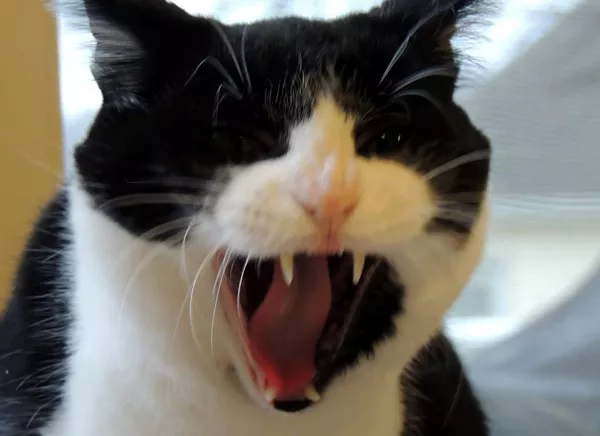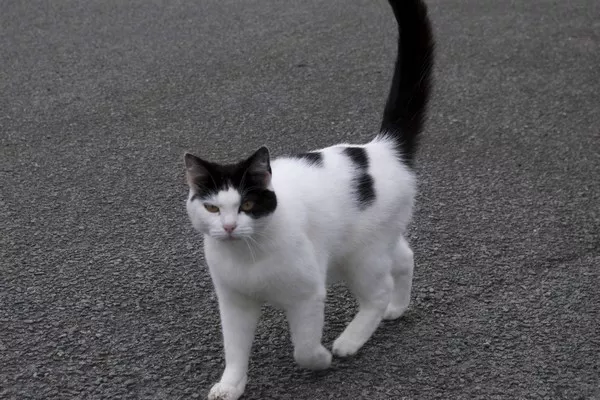Cats are known for their curious nature, and it’s not uncommon for them to show interest in the food we consume. While the occasional treat is harmless, the challenge arises when your feline friend becomes too enthusiastic about sampling human food regularly. Disciplining a cat for this behavior requires a delicate balance between firmness and understanding. In this article, we explore effective strategies for teaching your cat to resist the allure of human food without compromising their well-being.
9 Ways To Stop Cats From Eating Human Food
1. Establishing a Consistent Feeding Routine
One of the fundamental aspects of managing your cat’s desire for human food is to establish a consistent feeding routine. Cats thrive on routine, and regular meal times help create a sense of predictability in their lives. Ensure that you are feeding your cat high-quality cat food that meets their nutritional needs. This not only promotes their overall health but also reduces the likelihood of them seeking alternative sources of food.
2. Avoiding Reinforcement of Undesirable Behavior
It’s crucial not to unintentionally reinforce your cat’s undesirable behavior. If your cat has successfully stolen a morsel of human food, resist the urge to scold or punish them after the fact. Cats do not understand cause and effect in the same way dogs do, and punishing them after the fact may only confuse or frighten them. Instead, focus on preventing access to human food in the first place.
3. Secure Food Storage
One of the most effective ways to discipline a cat for eating human food is to prevent access to it. Store human food securely in sealed containers or the refrigerator to make it inaccessible to your feline friend. Cats are remarkably resourceful, so be sure that containers are cat-proof and not easily opened. This not only discourages their efforts but also ensures their safety, as some human foods can be toxic to cats.
4. Introduce Cat-Friendly Alternatives
Understanding that your cat is naturally curious about different textures and flavors can help in redirecting their attention. Introduce cat-friendly alternatives that mimic the aspects of human food they find enticing. There are various cat treats and snacks available that can provide a satisfying experience without compromising their diet. Experiment with different textures and flavors to find what your cat enjoys.
5. Utilize Positive Reinforcement
Positive reinforcement is a powerful tool when it comes to disciplining cats. When your cat displays the desired behavior, such as refraining from attempting to steal human food, reward them with praise, pets, or a small treat. This creates positive associations and encourages them to repeat the behavior that earns them positive attention. Cats respond well to positive reinforcement, as it aligns with their natural inclination towards rewards.
6. Establishing Boundaries with Environmental Aids
Environmental aids, such as motion-activated deterrents or pet-friendly sprays, can be effective in establishing boundaries. These aids create a negative association with certain areas or behaviors, deterring your cat from approaching or attempting to access human food. It’s essential to choose products that are safe for cats and do not cause harm. Consistency is key, so be patient and persistent in reinforcing these boundaries.
7. Training with Distractions
Training your cat to avoid human food can be achieved through distraction techniques. When you’re preparing or consuming human food, engage your cat with interactive toys, puzzles, or playtime. This not only redirects their focus but also provides mental and physical stimulation. Over time, your cat will learn to associate the presence of human food with enjoyable activities that do not involve consumption.
8. Addressing Underlying Health Issues
In some cases, a cat’s persistent interest in human food may be driven by underlying health issues. If your cat’s behavior changes suddenly or if they exhibit signs of distress, it’s crucial to consult with a veterinarian. Medical conditions such as nutritional deficiencies or gastrointestinal problems can contribute to unusual eating habits. Addressing any potential health concerns is a vital aspect of ensuring your cat’s well-being.
9. Consistency is Key
Disciplining a cat requires consistency and patience. Cats thrive on routine and repetition, so it’s essential to apply your chosen disciplinary measures consistently. Inconsistency can lead to confusion, making it more challenging for your cat to understand the desired behavior. Whether using positive reinforcement, environmental aids, or distraction techniques, be persistent in your approach.
See Also: 12 Human Foods That Are Poisonous to Cats
Conclusion
Disciplining a cat for eating human food is a process that requires a combination of understanding, patience, and consistent effort. By establishing a routine, securing food storage, and employing positive reinforcement, you can guide your feline friend towards healthier behaviors. Remember that each cat is unique, and it may take time to find the most effective approach for your particular feline companion. With dedication and a gentle touch, you can help your cat resist the allure of human food while strengthening the bond between you and your cherished pet.



























